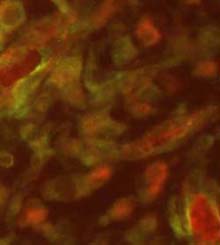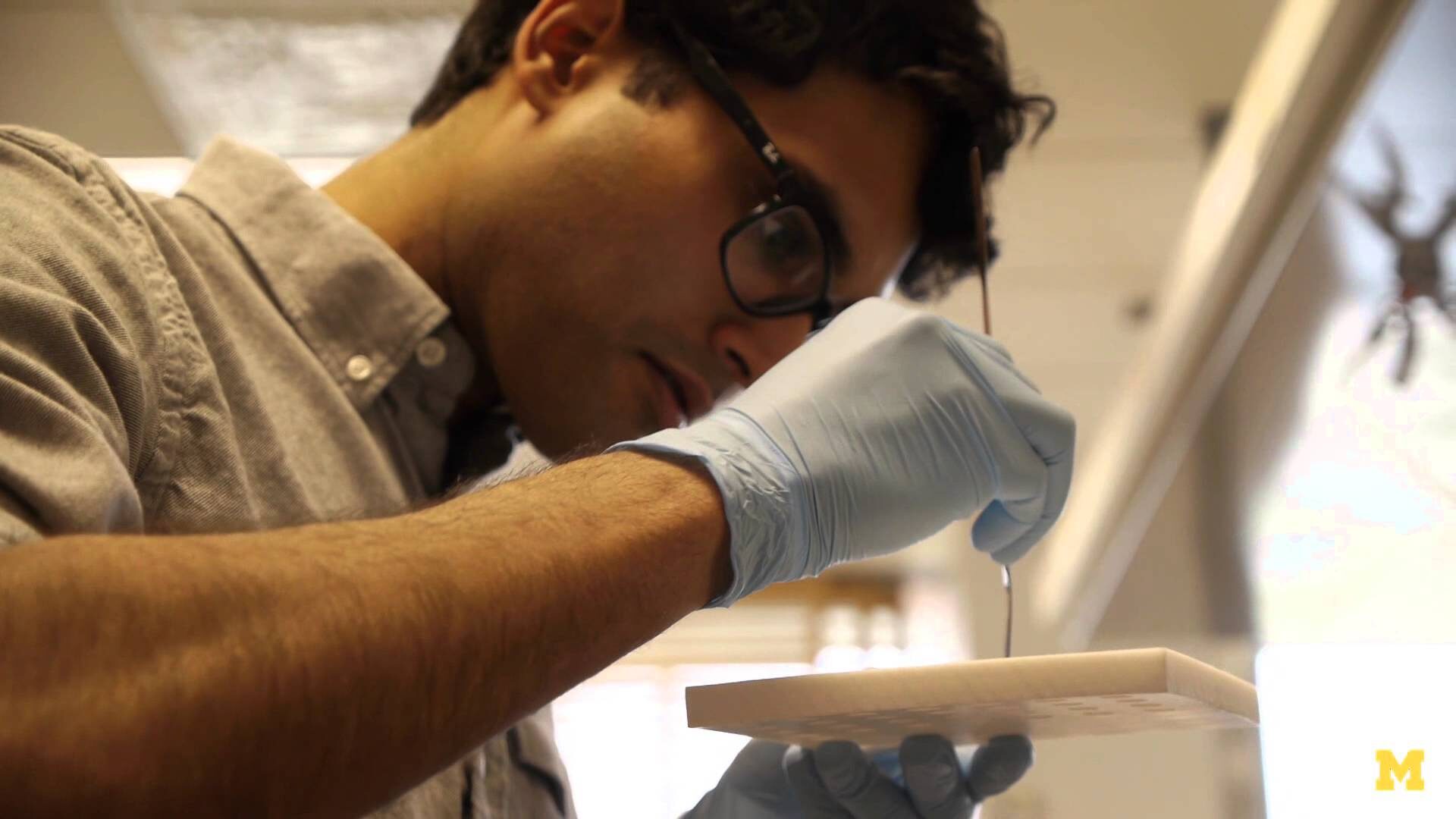One of the major obstacles to growing new organs—replacement hearts, lungs and kidneys—is the difficulty researchers face in building blood vessels that keep the tissues alive, but new findings from the University of Michigan could help overcome this roadblock.
“It’s not just enough to make a piece of tissue that functions like your desired target,” says Andrew Putnam, U-M associate professor of biomedical engineering. “If you don’t nourish it with blood by vascularizing it, it’s only going to be as big as the head of a pen.
“But we need a heart that’s this big,” he adds, holding up his fist.More immediately, doctors and researchers believe figuring out how to grow working blood vessels might offer treatments for diseases that affect the circulatory system such as diabetes. Perhaps the right drug or injection could save patients’ feet from amputation.
Putnam and his colleagues have revealed why one of the leading approaches to building blood vessels isn’t consistently working: It’s making leaky tubes. They also demonstrated how adult stem cells could solve this problem. A paper on the findings is published online in Tissue Engineering Part A, and will appear in a forthcoming print edition.
Today, biomedical researchers are taking two main approaches to growing new capillaries, the smallest blood vessels and those responsible for exchanging oxygen, carbon dioxide, and nutrients between blood and muscles or organs.

Engineered blood vessels built with lung fibroblasts as supporting structure cells were leaky, as this image depicts. Red represents the tracer dye the researchers injected into the bloodstream of mice. The tracer dye does is not contained in vessels. The researchers captured this image 14 days after the experiment began. (Image credit: Stephanie Grainger)
One group of researchers is developing drug compounds that would signal existing vessels to branch into new tributaries. These compounds—generally protein growth factors—mimic how cancerous tumor cells recruit blood vessels.
The other group, which includes the U-M team, is using a cell-based method. This technique involves injecting cells within a scaffolding carrier near the spot where you want new capillaries to materialize.
In Putnam’s approach, they deliver endothelial cells, which make up the vessel lining and supporting cells. Their scaffolding carrier is fibrin, a protein in the human body that helps blood clot.
“The cells know what to do,” Putnam says. “You can take these things and mix them and put them in an animal. Literally, it’s as easy as a simple injection and over a few days, they spontaneously form new vessels and the animals’ own vasculature connects to them.”
But it turns out these vessels don’t always thrive. The U-M team aimed to figure out why. In reading previously published findings, Putnam noticed that researchers used “a mishmash of support cells,” and the field had paid little attention to which ones work best. So that’s where he and his colleagues focused.
In their experiments, they mixed three recipes of blood vessel starter solutions, each with a different commonly used supporting cell type: lung fibroblasts, adult stem cells from fat, and adult stem cells from bone marrow. They also made a version with no supporting cells at all. They injected each solution under the skin of mice, and allowed the new blood vessels to form over a period of two weeks. At various points in time, they injected a tracer dye into the animals’ circulatory system to help see how well the engineered capillaries held blood, and whether they were connected to the animals’ existing vessel networks.
The researchers found the solution with no support cells and the one with the lung fibroblasts produced immature, misshapen human capillaries that leaked. They could tell because the tracer dye pooled in the tissue around the new vessels. On the other hand, the solutions with both types of adult stem cells gave rise to robust human capillaries that kept blood and dye inside them.
The paper notes one popular method biomedical engineers use to check the success of their efforts—counting blood vessels—might not be an ideal measure. The adult stem cell solutions produced fewer blood vessels than the others, in one case less than half. But the vessels they did build were stronger. And upon further analysis, the researchers found evidence that the adult stem cells may be able to differentiate into the kind of mature, smooth muscle cells that support larger blood vessels.
“The adult stem cells from fat and bone marrow both work equally well,” Putnam says. “If we want to use this clinically in five to 10 years, I think it’s crucial for the field to focus on a support cell that actually has some stem cell characteristics.”
Down the road, Putnam envisions doctors could get these support cells from individual patients themselves—either from their bone marrow or fat—and then inject them near the site where the new blood vessels are needed.
The paper is titled, “Stromal Cell Identity Influences the In Vivo Functionality of Engineered Capillary Networks Formed by Co-delivery of Endothelial Cells and Stromal Cells.” The research was funded by the National Institutes of Health.




Marlene Larkins - 1985
This is so needed and I hope to see it in practice soon.
Reply